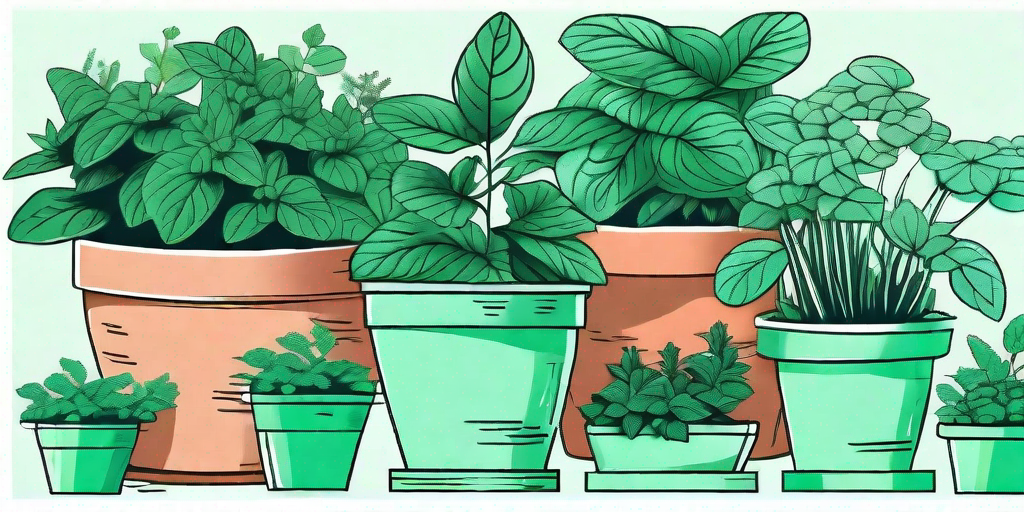
Welcome to the wild world of mint, where the flavors are as diverse as the plants themselves. Whether you're a seasoned gardener or a novice with a newfound interest in botany, this guide will take you on a journey through the various types of mint plants, their uses, and how to grow them. So, buckle up and prepare for a minty fresh adventure!
The Minty Spectrum: A World of Flavors
When it comes to mint, most people think of the classic peppermint or spearmint. However, the mint family is much more extensive and exotic than you might imagine. From the sweet and fruity apple mint to the subtly spicy ginger mint, there's a flavor for every palate.
But don't let the names fool you. While some mints do have a hint of their namesake's flavor, others are more elusive. For example, chocolate mint doesn't taste like a mint chocolate chip ice cream, but rather has a rich, earthy flavor that complements the mint's natural freshness. So, don't be afraid to experiment and find your favorite!
Peppermint
Peppermint is the quintessential mint, known for its strong, refreshing flavor. It's a hybrid mint, a cross between watermint and spearmint. This is the mint you'll often find in toothpaste, chewing gum, and your favorite holiday candies.
But peppermint isn't just for freshening breath and satisfying sweet tooths. It's also widely used in herbal medicine for its soothing properties. So, next time you have a stomach ache, try sipping on some peppermint tea!
Spearmint
Spearmint, also known as garden mint, is another popular variety. It has a milder flavor compared to peppermint, making it a versatile ingredient in both sweet and savory dishes. It's also the mint of choice for the classic mint julep cocktail. So, if you're planning a Kentucky Derby party, make sure to have some spearmint on hand!
Like peppermint, spearmint also has medicinal properties. It's been used in traditional medicine to aid digestion and relieve symptoms of nausea and colds.
Apple Mint
Apple mint, with its sweet, fruity flavor, is a delightful addition to any garden. Its leaves are larger and fuzzier than other mints, making it a visually appealing plant as well. Try adding some apple mint to your next fruit salad or summer cocktail for a refreshing twist.
Medicinally, apple mint is used to help relieve symptoms of irritable bowel syndrome (IBS) and other digestive issues. It's also been used in aromatherapy for its calming effects.
How to Grow Your Own Mint
Now that you've been introduced to the various flavors of mint, you might be itching to grow your own. The good news is, mint is a hardy plant that's relatively easy to grow, even for beginners. However, it can also be a bit of a garden bully, spreading quickly and taking over if not kept in check. But don't worry, we've got you covered with some tips to keep your mint plants happy and your garden intact.
First, choose your variety. Consider your culinary and medicinal needs, as well as your personal flavor preferences. Once you've chosen your mint, you can start planting. Mint prefers a sunny or partially shaded spot with well-draining soil. It can be planted from seeds, cuttings, or transplants.
Planting Mint
When planting mint, it's important to give it plenty of space to grow. If you're planting in a garden, consider using a container or a raised bed to prevent it from spreading too much. If you're planting in a pot, make sure it's large enough to accommodate the mint's vigorous growth.
Plant your mint in the spring or fall. If you're planting from seeds, sow them directly in the soil. If you're using cuttings or transplants, dig a hole large enough for the root ball, place the plant in the hole, and cover it with soil. Water thoroughly after planting.
Caring for Mint
Mint is a low-maintenance plant, but it does require some care to thrive. Water it regularly, especially during dry spells. Mint prefers moist soil, but be careful not to overwater, as this can lead to root rot.
Prune your mint regularly to promote bushier growth and prevent it from becoming leggy. You can also harvest the leaves as needed for cooking or medicinal uses. Just be sure not to harvest more than one-third of the plant at a time to allow it to recover.
FAQs
Can I grow different types of mint together?
While it's possible to grow different types of mint together, it's not recommended. Different mint varieties can cross-pollinate, leading to hybrid plants that may not have the desired flavor. To keep your mint varieties pure, plant them in separate containers or beds.
Why is my mint plant wilting?
There could be several reasons why your mint plant is wilting. It could be due to underwatering, overwatering, or a lack of sunlight. Check the soil and adjust your watering schedule as needed. If your mint is in a shaded area, consider moving it to a sunnier spot.
Can I use mint in my cooking?
Absolutely! Mint is a versatile herb that can be used in a variety of dishes. From refreshing salads and drinks to savory lamb dishes and sweet desserts, the possibilities are endless. Just remember, different mint varieties have different flavors, so choose the one that best suits your recipe.
Conclusion
So there you have it, a comprehensive guide to the wonderful world of mint. Whether you're a mint connoisseur or a curious beginner, we hope this guide has inspired you to explore the many varieties of mint and perhaps even start your own mint garden. Remember, the world of mint is vast and varied, so don't be afraid to experiment and find your own favorite variety. Happy gardening and bon appétit!











